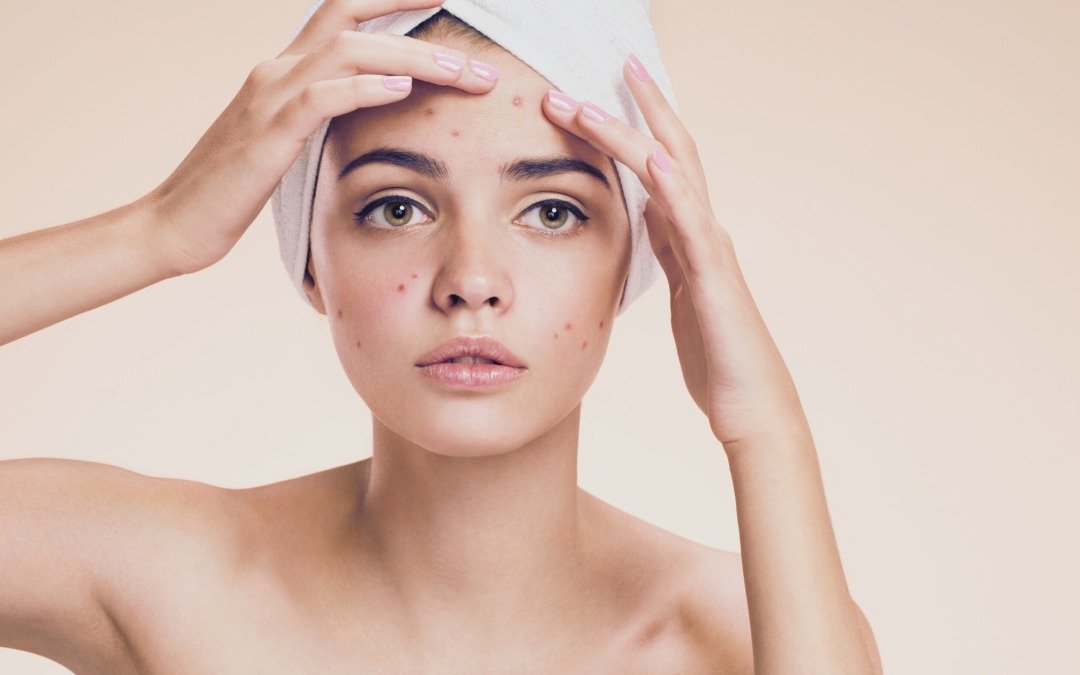How to Treat A Popped Pimple
So you popped a pimple. Now what?
Whether it’s accidental or on purpose (‘fess up, sometimes you just can’t help it), we’ve all been there. Popping a pimple can be tempting and may seem like a quick fix to a minor problem. But sometimes this “quick fix” can leave a noticeable scar on your face that’s just as bothersome and distracting as the pimple you popped. On top of that, popping pimples can make the skin susceptible to bacterial infection and dark spots caused by post-inflammatory hyperpigmentation.
If you’re here because you’ve already committed one of skin care’s cardinal sins, then keep on reading to find out how to treat a popped pimple.
1. Cleanse the area
Consider the popped pimple an open wound that is susceptible to harmful bacteria. The first step should be to cleanse the area immediately to prevent it from getting infected. Spalina Skincare’s AlphaVitality Cleanse contains peppermint oil that serves as a soothing anesthetic, antimicrobial, and antiviral balm to the skin. This facial cleanser helps fight bacteria as well as prevent more acne breakouts.
2. Apply antibacterial ointment or spot treatment
After cleansing your face, apply an antibacterial ointment or spot treatment directly on the area once or twice daily. This will help reduce inflammation while fighting off bacteria.
3. Keep it moisturized and protected
Don’t neglect moisturizers and facial serums even when you have an oily and acne-prone skin type. Choose products that contain antibacterial and anti-inflammatory properties such as Spalina Skincare’s Manuka Infused Lipid Creme and Weightless Probiotic Defense Cream. The Epidermal Repair Serum which contains Trioxolane helps restore inflamed and wounded skin. It also strengthens the skin’s immune system in order to prevent more acne breakouts.
4. Give it time to heal
Avoid touching your face to prevent bacteria and skin irritation. This means that no matter how tempting it is to pick at the scab, resist the urge because it will only slow down the healing process and damage your skin further. Also avoid piling the affected area with makeup. If you must wear makeup, use a pimple patch to cover the scab first.
What to do with acne scars
If you’ve done your best to treat your popped pimple and still ended up with scarring, then here are some products and treatments to help you reduce and even completely remove acne scars:
Stem Cell Infusion Serum
This potent serum rapidly repairs and rejuvenates skin. It contains lemon oil which aids in diminishing acne scars.
Epidermal Repair Serum
This serum is effective in restoring wounded skin, strengthening the skin’s immunity, and improving skin’s texture.
Microneedling or Collagen Induction Therapy
Microneedling is better for depressed (not raised) acne scars. This is because a raised acne scar means that you already have excess collagen in that area. Microneedling stimulates your skin to produce more collagen which will then help smoothen out your skin’s appearance. This works even better when combined with Spalina Skincare’s Complex Vitamin C serum.
Microcurrent Skin Rejuvenation
Microcurrent is a non-invasive and pain-free procedure that helps treat acne and acne scarring by increasing blood circulation and flushing out toxins. It also promotes healing and tissue regeneration.
If you’re interested in treating your acne scars, you can book an appointment with Spalina Skincare’s licensed esthetician, Spela Hernandez, here.
How to get rid of pimples fast
If you find yourself with another pimple, do yourself and your skin a favor and keep your hands off of it. Instead, click here for some tips on how to get rid of pimples fast and maintain clear, smooth skin.

